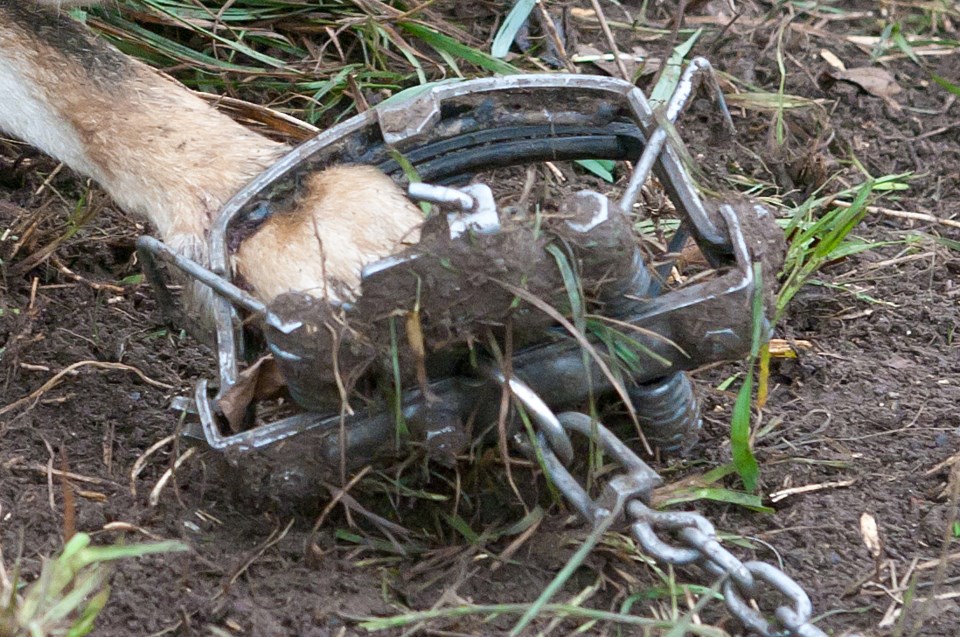Anyone with information about an illegal leg-hold trap that a conservation officer pried off a Burnaby coyote’s leg last month is being urged to contact the B.C. Conservation Officer Service.
The coyote was spotted in the area of 9th Avenue and Willard Street in South Burnaby on Oct. 19 at about 10 a.m. and then again a couple hours later, according to a post on Reddit.
The post said the animal was dragging the trap along on its back leg.
The SPCA and COS were contacted, according to the post, but the SPCA was “completely unresponsive” and COS said it would “pass the info on.”
Burnaby RCMP was called at about 7:53 p.m. that night, but the coyote wasn’t caught until two days later, according to spokesperson Cpl. Mike Kalanj.
He said a conservation officer and local Mountie managed to catch it with an animal-control pole (a long pole with a noose at one end) at about 10:50 a.m. in the 6000 block of 9th Avenue.
“They caught it, held it down, took the trap off and released it so it could live the rest of its life without a trap on its leg,” Kalanj said.
An email from a COS communications coordinator said the coyote was “fully mobile upon release” and the service has gotten no reports of any coyotes in distressed or injured in the area since.
“The foothold trap that was removed from the coyote was found to be improperly anchored, and thus the coyote was able to dislodge the trap from whatever it was attached to,” stated the email. “If anyone has information regarding who unlawfully set the trap, it can be reported to the COS Report All Poachers and Polluters (RAPP) hotline at 1-877-952-7277.”
The COS has gotten 51 coyote reports in Burnaby so far this year. It got an average of 65 such calls between 2016 and 2020.
The service reminds residents to avoid feeding the animals either directly or with improperly secured garbage, pet food or bird seed.
“Coyotes start posing a risk to people when they lose their wariness and become comfortable around humans,” stated the email. “This is usually a result of direct or indirect feeding by humans.”
Follow Cornelia Naylor on Twitter @CorNaylor
Email [email protected]




